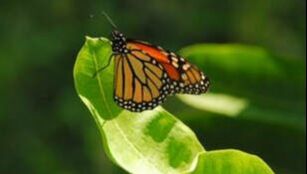 Photo by Tom Earnhardt Photo by Tom Earnhardt Nick Haddad, previously a professor of ecology at NC State University and presently senior ecologist with the W.K Kellogg Biological Station in Michigan, recently authored a fascinating and thought-provoking book, The Last Butterflies: A Scientist’s Quest to Save a Rare and Vanishing Creature (Princeton University Press, 2019). His quest involved determining which of half-a-dozen butterfly species is most at risk of extinction—regrettably, most of them barely clinging to survival in southern U.S. habitats. <<continued....>> Haddad focuses on 6 of 730 butterfly species in America (unfortunately, the number of butterflies that could “compete” for this distinction is expanding). After conducting surveys and examining conservation biology and predicament, Haddad identified the Schaus’ Swallowtail as most probable for extinction in the nearest term (one last population in the Florida Keys remains “viable,” though that too is in extreme jeopardy). But that is not really Haddad’s point. As global change accelerates—as populations of rare species are lost, principally as a result of habitat destruction combined with consequences of rapidly changing climate—we can anticipate the list of rare butterflies to swell.
Not only are the trajectories of the rarest butterflies pointing downward, but that is true for other once more common species. Think, for example, of the Eastern North American Monarch Butterfly, a once common species with large population that is now in serious decline. A recent study showed that average population sizes of ALL butterfly and moth species GLOBALLY have dropped by 30 percent over 40 years, and in some places insect biomass has suffered losses as much as 75 percent in recent decades. We may be verging on talking about “The Last Butterfly.” Butterflies are the new “canaries in the coal mine.” Butterfly declines and extinctions are indicators of other, less-observed extinctions among all insects. Butterflies simply are better researched than other insect species. As is the case for all other threatened plant or animal species, the single greatest threat to butterflies is loss of habitat. But habitat loss is not isolated from other negative effects that drive populations into downward spirals, including fragmentation of populations by highway and urban construction, greater air pollution, conversion of natural ecosystems by invasion of exotic species, altered rainfall and temperatures, higher risks of wildfires and flooding, and more. Habitat disturbance and degradation is the common thread binding all explanations of species population vulnerability and probabilities of extinction. With every loss, there is further erosion of the biodiversity of our planet. Recovery and survival will demand human intervention. An understanding of basic natural history is essential, in combination with active restoration of habitats and in some cases rearing and reintroduction of populations. But such species restoration is dependent on recovery of complex, degraded ecological systems. Time and again we see that species recovery is critically linked to landscape conservation, and that we must apply basic ecological principles, including the interconnection of functioning habitats. Haddad concludes that the rarest butterflies have a fighting chance for survival because they can live in harmony with people. And when people act in their own best interests, butterflies, like other native species, can persist. With combined efforts of deliberate and sustained science and conservation, species recovery is possible. If we can understand threats to the rarest butterflies, we can use that knowledge to conserve not only more butterflies, but also other species and biodiversity. --Chuck Roe, SCP President
0 Comments
Leave a Reply. |
When we see land as a community to which we belong, we may begin to use it with love and respect.... Conservation, viewed in its entirety, is the slow and laborious unfolding of a new relationship between people and land." There is in fact no distinction between the fate of the land and the fate of the people. When one is abused, the other suffers. From the PresidentSCP President Chuck Roe looked at land conservation along the route of John Muir's "Southern Trek." About ViewpointThis blog offers views of our Board and partners. We invite your viewpoint on the following questions: Archives
April 2024
Categories
All
|

 RSS Feed
RSS Feed